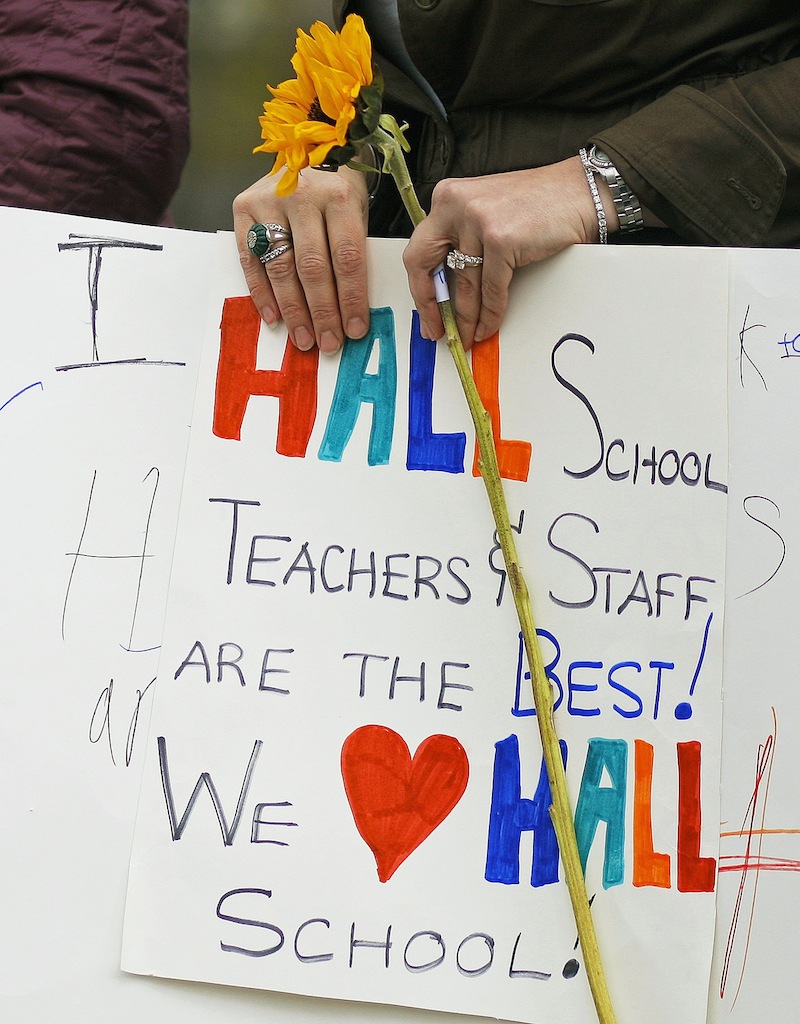PORTLAND — Education experts say it’s no surprise that Maine’s new A-to-F school grading system shows schools in wealthier communities generally have higher grades while those in poorer communities have more D’s and F’s.
Research has shown that correlation for decades, and critics say the school report cards released Wednesday are more indicative of the students’ socioeconomic status than the overall performance of any particular school.
“The grades released show that those (high) schools receiving A’s have on average 9 percent of students receiving free and reduced lunches (a measure of students living in poverty) and those schools assigned F’s have 61 percent of their students participating in the program,” said Rebecca Millett, D-Cape Elizabeth, the Senate chairwoman of the Legislature’s Education Committee.
Elementary schools that got F grades have an average of 67 percent of their students eligible for free and reduced-price lunch. At schools that got A’s, the average is 25 percent.
In general, the grades are based on standardized test scores in math and English, students’ growth and progress, and the performance and growth of the bottom 25 percent of students. For high schools, graduation rates are another factor.
More than a dozen other states use similar grading systems. Maine intentionally kept the criteria simple, say Gov. Paul LePage and Education Commissioner Stephen Bowen.
“What this has already done is create a discussion across the entire state, and that’s not a bad thing,” LePage’s spokeswoman, Adrienne Bennett, said Thursday. “We welcome the discussion.”
Advocates say the system, backed up by a new comprehensive “data warehouse” on the Education Department’s website, provides transparency and gives parents a snapshot of how their children’s schools are doing.
Critics say a single letter grade doesn’t capture the totality of a school’s work and community.
“There’s a saying that ‘simplicity is the enemy of fairness.’ This strikes me as one of those situations,” said David Silvernail, director of the Center for Educational Policy, Applied Research and Evaluation at the University of Southern Maine. “We know there is a relationship (between poverty and lower test scores) there. It’s been well established. This grading system, unfortunately, just highlights it.”
He said a system that included socioeconomic data and expenditures would give a clearer picture of a school’s performance.
Grading schools A to F is “an extremely blunt and crude way to approach such a complicated topic,” said Donald Hernandez, a demographer and sociology professor at Hunter College of City University of New York.
Families who live in poverty are more likely to live in neighborhoods with lower-performing schools, he said. Those schoolchildren are more likely to be hungry, lack adequate medical care, lack the language or social skills they need to succeed, or miss school frequently because of health or family concerns.
He said the best way to close the gap between disadvantaged students and wealthier ones is to focus on early education.
“My research clearly shows the biggest bang for the buck is investing in early education,” said Hernandez.
Overcoming external factors to score higher on standardized tests can be daunting for schools. Maine officials say the grading system will help them target state resources to the right places.
“This is an accountability system,” said Samantha Warren, spokeswoman for the Department of Education. “The status quo is not acceptable.”
Warren noted that about 20 elementary schools where more than 50 percent of the students get free or reduced-price lunch received A’s or B’s. Education officials must visit those schools and see what they’re doing to learn best practices, she said.
“Now that we have the data, we can really look at that data to understand what is happening,” Warren said.
Some of that work has already begun. Silvernail wrote a report for the Legislature last year that identified and documented the practices of higher-performing, more efficient schools in Maine. He found that a school’s culture and efficient use of teaching time are key factors in success.
His research also showed evidence that mirrors national studies on poverty and how students fare on standardized tests: In the average Maine high school, 44 percent of the students qualify for free or reduced-price lunch, while in the high schools he found to be more efficient, only 15 percent qualify, according to his report.
Silvernail is hopeful that schools can adopt practices to overcome economic disadvantages.
“Yes, there is a relationship, but it’s important to realize that relationship does not automatically relegate you to lower performance,” he said Thursday. “It’s what you do inside the schools that counts. But it’s harder work, it can take longer, and it can take different resources.”
Rachelle Tome, chief academic officer in the Department of Education, agrees. She has led the state’s oversight of federally funded programs that target disadvantaged students.
“In these schools, the mitigating factor is having a whatever-it-takes approach. Don’t let barriers get in the way. You drill down into what those students need and what those teachers need,” Tome said.
She acknowledged that some schools with innovative programs got low grades under the state’s scoring system.
“When you embark on a major improvement plan, it doesn’t happen overnight,” she said. “I have every confidence that they will improve. Sometimes it takes a while.”
Silvernail said he agrees that the grades will start conversation, and “it helps that you have some pressure from the community to say, ‘Hey guys, you’ve got to figure this out.’“
Noel K. Gallagher can be contacted at 791-6387 or at:
ngallagher@pressherald.com
Send questions/comments to the editors.




Comments are no longer available on this story